Application for ATC codes
Data requirements
The following data should be submitted when requesting an ATC code for a substance:
- Chemical structure and relationship to similar drugs
- Pharmacology and mechanism of action and relationships to similar drugs
- Main indication as shown in the product information in major countries where it is licensed or submitted for licensing
- Other indications which are licensed or for which licensing is proposed in the future
- Proposed ATC classification with justification based on the evidence submitted
- Status concerning marketing authorisation
- Information about therapeutic use, if available
Useful sources of these data would be approved product information documents from regulatory authorities or proposed product information documents stating that these are not yet approved. Summaries of submissions to, or evaluations from, major regulatory agencies relating to the above are useful, as well as market research data showing the percentage use for the main indications.
Procedure (to the top)
All new entries in the ATC classification system are assigned on request from the users. Requests for ATC classification of a medicinal substance should be addressed to the WHO Collaborating Centre for Drug Statistics Methodology in Oslo, Norway (Application form). Application for ATC is free of charge. The official language of the Centre is English. Requests and documentation should accordingly be submitted in English.
If a substance marketed in a country is not included in the latest version of the annually updated ATC classification index, a request for an ATC code may in principle be sent from any user of the system (e.g. health authorities, pharmaceutical manufacturers, researchers and other users). It will usually be the manufacturer who has best access to the information required for an application. The manufacturer will usually wish to know about and be involved in an application for an ATC classification and/or DDD assignment for one of their products, particularly if it is a new drug.
A new chemical entity is normally not included in the ATC system before an application for marketing authorisations is ready for submission in at least one country. In some cases, it may be necessary to await a classification until the new medicinal product has been approved in at least one country (especially for substances where it is considered difficult to establish a new 5th level). These conditions are set to avoid including in the ATC system too many chemical entities which never become marketed.
It is left to the national users of the ATC system to classify combination products based on the principles given in these guidelines. The guidelines are prepared in order to facilitate this work and to ensure that different users of the ATC system classify in a consistent way. If the content of these guidelines is not sufficient to decide a classification of a specific combination, or if it is necessary to establish a new ATC entry, such problems should be addressed to the WHO Centre in Oslo. The Centre also runs regular training courses to assist those working with the system at a national level.
The WHO International Working Group for Drug Statistics Methodology formally approves all new ATC codes. The group has two annual meetings, normally in March and October.
The steps in the approval procedure for new ATC codes are normally as follows:
- A standard letter confirming receipt of the request is returned from the Centre to the applicant.
- If the new code is easy to assign, a preliminary ATC code assigned by the Centre is returned to the applicant within 6-8 weeks, informing them that the ATC code still has to be formally approved by the Working Group at the next meeting.
- For substances with more than one alternative classification and for substances, which are difficult to classify into existing classifications, the requests are discussed in the Working Group before assignment of a preliminary ATC code. The applicant receives this information within 6-8 weeks after receipt of the request. After approval of the minutes of the Working Group meetings, the decision concerning the respective ATC code is sent from the Centre to the applicant.
- After approval of the minutes of the Working Group meeting the new ATC codes approved at the meeting are published on this website (New ATC codes and alterations) and in the next issue of the publication WHO Drug Information. A deadline will then be allowed for interested parties to comment or object to the decisions.
- If objections, justified on evidence submitted, are received, the ATC classification will be discussed again at the following meeting of the Working Group. If the decision is kept, then the decision is considered final after this meeting. If a new decision is taken by the Working Group, notification of this new ATC is published at on this website (New ATC codes and alterations) and in the next issue of the publication WHO Drug Information. A deadline is then allowed for any interested part to comment or object to the decision.
- If no objections are received, the new ATC code is considered final and included in the next issue of the ATC classification index. A list of new final ATC codes is also published semi-annually on on this website (New ATC codes and alterations) and in the WHO Drug Information.
Deadlines for applications (to the top)
(Deadlines for application)
Last updated: 2022-11-25

